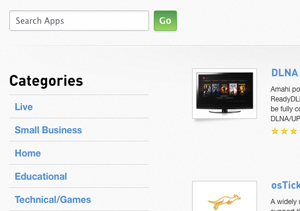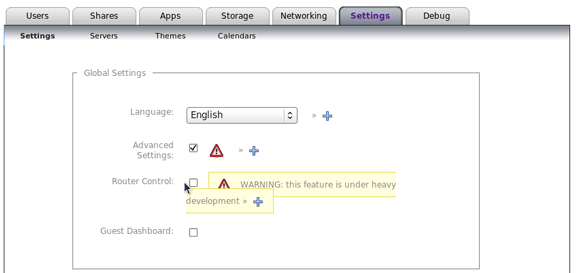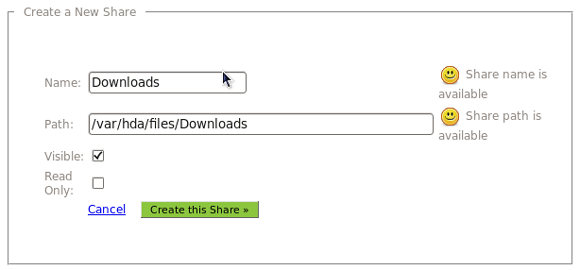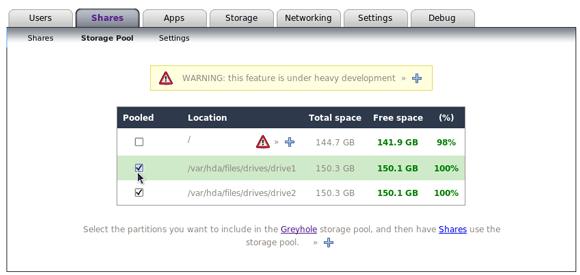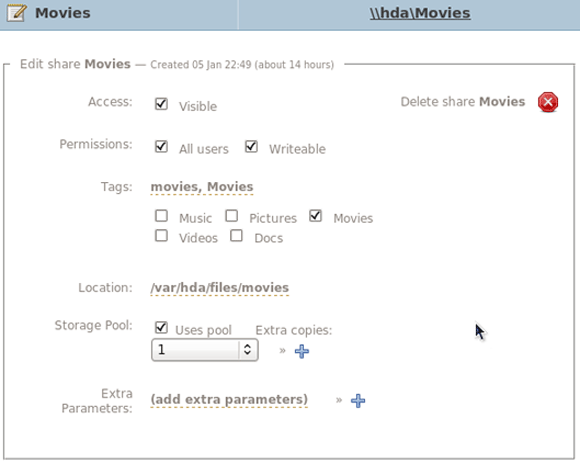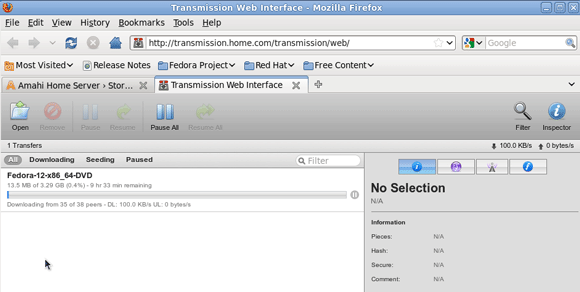In my third and final article about Amahi Home Server, I'm going to show you how to create new network shares to store files in, set up file-duplication for critical files using the Greyhole storage pool, and have a quick look at the other applications in the app store, such as Transmission for downloading torrents. I also test the file redundancy by powering off a drive while the server is running!
If you haven't already and wish to follow along with setting up your own home server with Amahi, you should begin by setting up a basic installation, then adding a hard drive to your system.
Turn on advanced settings
The storage pooling technology we'll be looking at today falls firmly under the category of advanced, so you'll need to enable advanced settings. Log into your HDA and click on Setup -> Settings -> tick Advanced Settings.
Shares
Shares are the most fundamental part of your server. A Share is basically just a folder that you access on your network to store files on, and Amahi is set up by default with Shares such as Books, Movies, Pictures. To create a new Share, go to Setup -> Shares, and click the New Share button. The default options are fine, just type in the name of your new share and click Create.
File Duplication
With advanced settings enabled, you'll notice that on the Setup -> Shares screen, a new menu option for Storage Pool has appeared. From here, we can select drives to add them to the "pool". Once in the pool, we can duplicate files across them and ensure redundancy.
Note: the first drive listed is the drive that Amahi is installed on. It is strongly suggested that you don't add this one to the pool, as filling it up would break your server.
For this, I've added two drives into the pool, so I'll be able to create a maximum of 1 copy. Tick the boxes next to the drive to add them into the pool:
Now we need to tell the system to make copies of anything in a particular share. To do this, click back to the Shares screen and select the Share you wish to add the duplication feature to. In this case, I've chosen Movies. Scroll down to the Storage Pool option, tick Uses Pool, and select the number of additional copies.
To test it, I copied 20 GB of my favourite movies in and waited about half hour for Greyhole to balance everything. To simulate a hard drive failure, I pulled the power off one of the drives while the system was running. The results? Good and bad.
Firstly, I tried to access the movies again, and they were fine - the duplicates obviously worked. On the bad side, Amahi gives no indication by default that a drive has actually failed, so if this were a real-life drive failure, I simply wouldn't know about it. I approached the creator of Greyhole (Guillaume Boudreau) in the official chatroom to ask about this, and it appears the fault is with Amahi. Though Greyhole will send emails when errors occur, by default Amahi doesn't enable outgoing emails. He suggested following this Amahi wiki tutorial on enabling outgoing emails [Broken URL Removed], and then to edit the greyhole.yml and greyhole.conf with the email address you want alerts sent to.
Hopefully, future versions of Amahi will sort this out. I must say I'm impressed with the fact that I was able to get a comprehensive answer, from the creator no less, in under 5 minutes. The same could not be said of most software packages, and this one episode has given me somewhat more faith in the power of Linux and the open source community in general.
There's also a useful page here on recovering from a hard drive failure with Amahi in case your system is restarted and cannot boot.
App Store and Transmission
One of the things I like to offload to my server is downloading torrents. Ideally, I'd like to just drop my torrent files in a network share, and let the server handle everything from there. In fact, this is the default behaviour for the Transmission app, which you can install from the Apps -> Available tab. Once installed, you'll be able to access the torrent management page directly from the Transmission Web Interface, and a new share called Torrents is automatically created.
Of course, Transmission isn't only app available, so here's a few that caught my eye.
Wordpress: If you'd like to run own blog on the world's most popular and actively supported blogging system, Wordpress is it. This app makes setting it up to run on your home server easy, and when you start getting a few thousand visitors a day, you can easily offload your site to a real web host. (Bear in mind that some ISPs eplicitly forbid you from running a webserver on your home internet connection)
WebVNC: To make your server truly headless, you can install WebVNC, which lets you log in and view the desktop from any web browser, not just the standard HDA dashboard.
DLNA: Enables your shared movies and media files to be viewed on DLNA/UPnP-AV clients easily, such as the Xbox360 or Playstation 3. DLNA is essential if you're planning on streaming movies rather than simply running a backup storage server.
CrashPlan: Though I haven't a had a chance to try this one and can't vouch for it, CrashPlan promises to be your ultimate back-up solution; with encryption, compression and automated backups on all of your Windows, Mac OSX, and Linux clients.
That's it for this series. Thanks to all those who have contributed in the comments of previous articles and suggested alternatives that we can explore in the future, and do please let us know if you found this useful in setting up your Amahi server, or your experiences with it so far. Would you trust your files to it?

